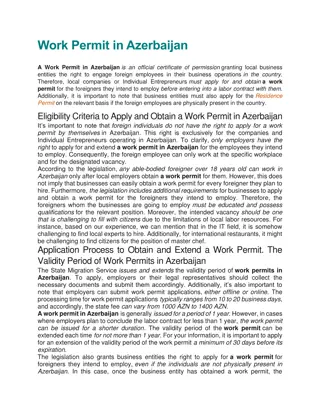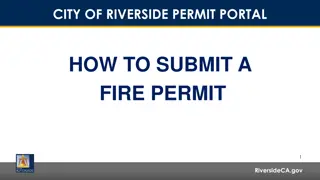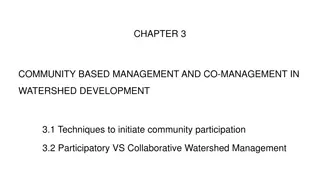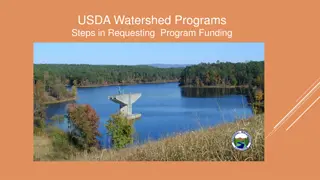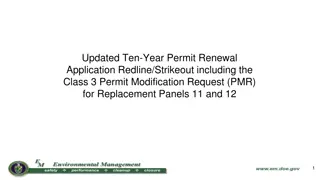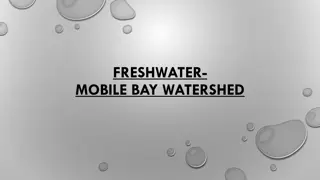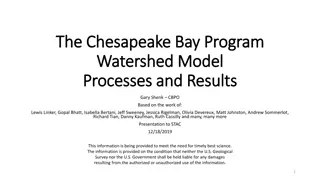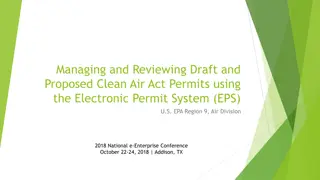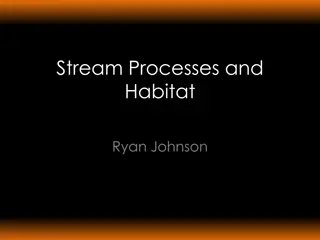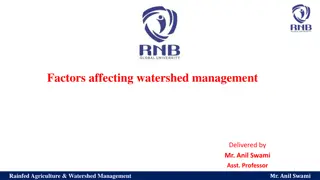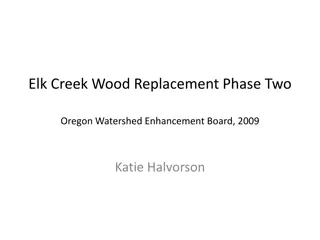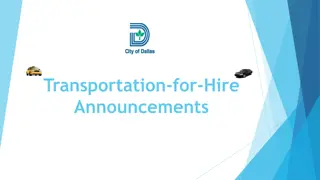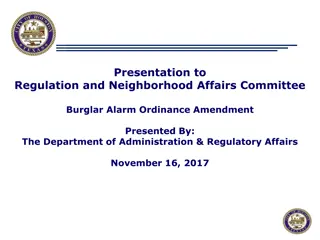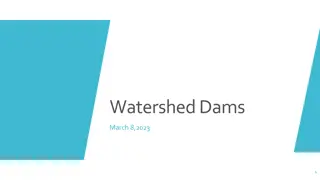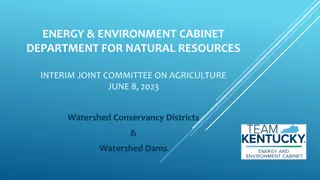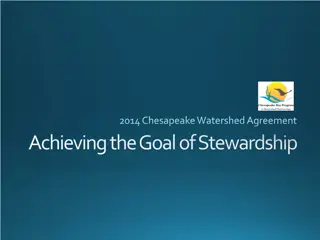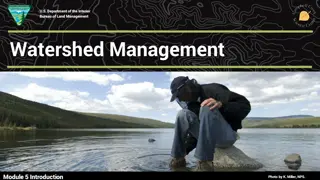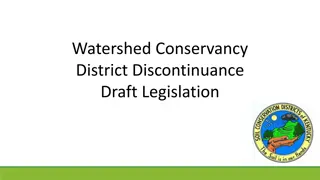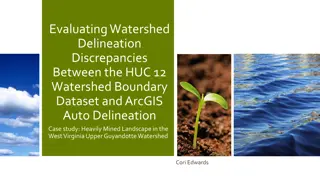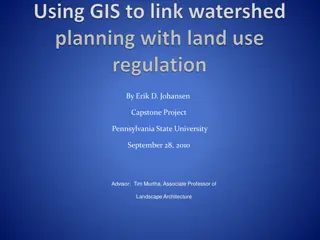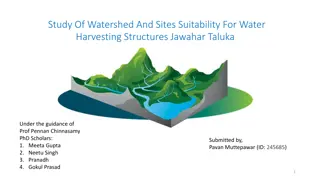
Addressing Challenges in Watershed Permit Compliance
This information delves into key challenges for the 3rd Watershed Permit, including identifying early actors, adjusting planning targets, securing science funding, interpreting scientific data, and more. It also covers questions regarding early actor identification, adjustments to Planning Level Targets (PLTs), science funding continuation, and interpreting scientific findings.
Download Presentation

Please find below an Image/Link to download the presentation.
The content on the website is provided AS IS for your information and personal use only. It may not be sold, licensed, or shared on other websites without obtaining consent from the author. If you encounter any issues during the download, it is possible that the publisher has removed the file from their server.
You are allowed to download the files provided on this website for personal or commercial use, subject to the condition that they are used lawfully. All files are the property of their respective owners.
The content on the website is provided AS IS for your information and personal use only. It may not be sold, licensed, or shared on other websites without obtaining consent from the author.
E N D
Presentation Transcript
Challenges to Address for the 3rd Watershed Permit
Summary of Key Challenges Identification of early actors Adjustments to Planning Level Targets Continued science funding Interpretation of the Science Imposition of load caps Negotiation of compliance schedules Trading Continuation of the BACWA Coalition
Early Actor Identification Permits lists 8 potential early actors, others could also be recognized Generally defined by at least 30% TIN load reduction from baseline (max dry season avg, May 1, 2014 to Sept 30, 2017) OR < 15 mg/l TIN Likely no further reductions required during the design life of capital improvements, assumes others can make reductions to get below subembayment cap Questions: Early actions by what date? Who will document identification of early actors? Does it matter who is the lowest on the priority list for future requirements?
Adjustments to PLTs PLTs set for all plants Several plants provided anticipated factors that would impact nutrients loads (e.g. recycling, organic diversions, daytime worker pop., etc.) Questions: How will these be documented? Will each plant advocate on their own? Will other plants in the subembayment have a stake in the outcomes?
Continued science funding Permit calls for $2.2M/yr for science funding WB has stated that a longer term monitoring and modeling program will be need. Tom Mumley: the more precautionary, the less $s will be needed post 2024 Questions: How will the level of funding be determined/negotiated? Will it continue to be based on TIN regardless of subembayment? Will all BACWA members continue to participate, even those who have taken early actions?
Interpretation of the Science Front loading the science will provide the best chance of having the WB well informed for the 2024 Permit The science will not provide black and white answers, rather risks based conclusions Questions: How will POTWs continue to engage in the discussion on what the science is telling us? The Assessment Framework will be key, the first version was not particularly well received, will BACWA need to seek independent opinions on the AF 2.0? There may be winners and losers, will the winners continue to stand by the losers?
Imposition of load caps The WB has forecasted that their intent is to include load caps in the 3rdWS Permit pending conclusions from the Science Plan Questions: Will all subembayments be treated the same? Will BACWA take a position on differentiating amongst subembayments? What is the expectation of the BACWA members on this issue?
Negotiation of compliance schedules The WB has indicated that if a POTWs can demonstrate diligent planning but can t meet a load cap, a compliance schedule could be negotiated Questions: Will each POTW negotiate their own compliance schedule? Will other POTWs in the subembayment have a stake in the negotiation in terms of equitable treatment
Trading The 2ndWS Permit recognizes the potential for a trading program The WB cannot be relied upon to develop a trading program but will react to concepts and proposals Questions: A trading program will take years to develop and require resources? When/if should we start?
Continuation of the BACWA Coalition BACWA has been successful in negotiating 10 years of permitting The 3rdWS Permit has the potential to be somewhat divisive, pitting one agencie s interest against another BACWA invoices have increase significantly over the last several years due to several factors (e.g. nutrients, projects of special benefit, etc.) Questions: Will the coalition be able to continue to think in terms of all for one and one for all?

